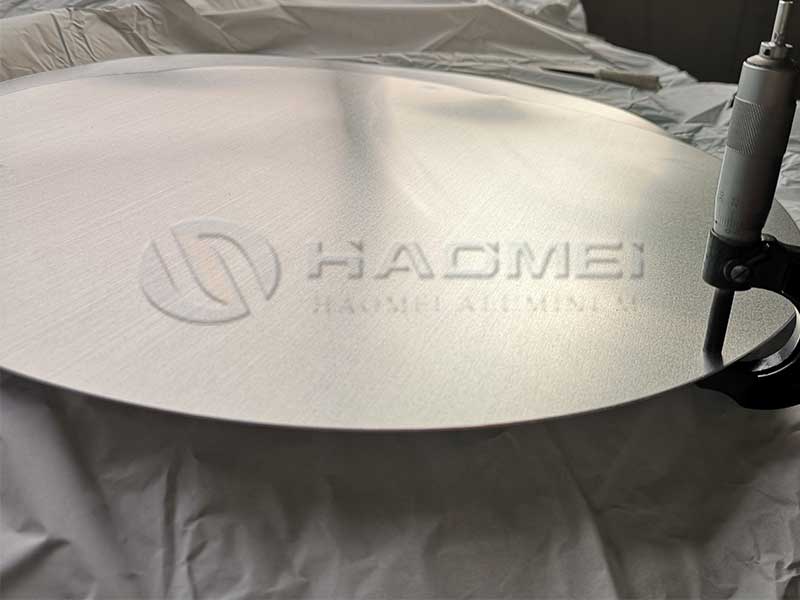Alloy 1100 1200 1050 o aluminium circle
Aluminum circles serve as an instrumental component across a multitude of industrial domains, showcasing unrivaled utility in configurations that require both structure and efficiency. Among the many aluminum alloys, the 1100, 1200, and 1050-O grades is know for their unique capabilities and the specific applications they facilitate.
the Alloys
Technical Parameters
- Alloy Designations: 1100, 1200, 1050
- Temper: O (Common for soft material usually used for drawing parts and stamping.)
- Chemical Composition:
- Copper (Cu): 0.05% Max
- Iron (Fe): 0.60% Max
- Silicon (Si): 0.25% Max
- Manganese (Mn): 0.05% Max
- Magnesium (Mg): 0.05% Max
- Zinc (Zn): 0.10% Max
- Others: Balance is Aluminum (Al)
Implementation Standards
These aluminum circles conform to recognized standards such as ASTM B221 (Standard Specification for Aluminum and Aluminum-Alloy Extruded Bars, Rods, Tubes, and Profiles) and ISO 9001 quality management systems, ensuring superior productivity and safety in high-performance environments.
Characterization of Alloys
1100: Known for its excellent corrosion resistance and thermal conductivity. It has high ductility, allowing for intricate shapes during fabrication and serves exceptionally in food handling and heating elements.
1200: Although similar in dispersion with 1100, this alloy has slightly improved electrical and thermal conductivity, making it useful for electrical components where conductivity holds paramount importance. It's also persistent in applications requiring a shiny aesthetic finish due to its metallurgical property to receive polish.
1050-O: Well-respected for its workability and resistance to chemical attack, especially in corrosive environments. This neutralizes challenges related to thermal and molecular stresses prevalent in powder metallurgy, maximizing it as an ideal candidate for deep drawing processes in manufacturing industries such as cookware.
Applications Explored
the contextual applications of these alloys unveils fascinating insights into their contributions—which often go unnoticed—within our mundane lives.
Cookware: Aluminum circles of these alloys are paramount in the manufacturing of pots, pans, and baking trays. For instance, the phenomenal heat-jacketing properties earmarked by the aluminum assists quick yet comprehensive heat control, yielding delightful culinary undertakings.
Lighting Fixtures: Alloy circles, in O temper, are robust for crafting attractive and lightweight lamp covers and lighting reflectors, enhancing illumination without manipulate excess weight or challenging structural support.
Automotive Industry: Ingeniously crafted round discs can be utilized in various automobile components, particularly panels due to their resilience paired with pliability, creating parts conducive to press fabrication processes.
Electronics: Subsequently, while the essence of the electrical charge seems invisible, the electromagnetic effusiveness bestowed by the electrical application standard rapidly propagates throughout older alloys, enjoying versatility from components like connectors to coated consumables unlimited to capacitive layers.
Architectural Features: Outward-facing components like architectural circles enrich decorative facades requiring stable yet chic finishes, with cleaner aesthetic appearances when designed using these aluminum grades, effectively merging beauty and water resistance.
Chemical Properties Table
| Material | Alloy | Chemical Composition | Density | Melting Point |
|---|---|---|---|---|
| Aluminium | 1100 | Al=99.00% | 2.70 g/cm³ | 660°C |
| Aluminium | 1200 | Al=99.28% | 2.73 g/cm³ | 660°C |
| Aluminium | 1050-O | Al=99.50% | 2.68 g/cm³ | 657°C |
https://www.al-alloy.com/a/alloy-1100-1200-1050-o-aluminium-circle.html


